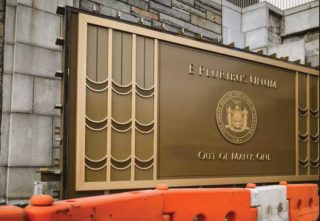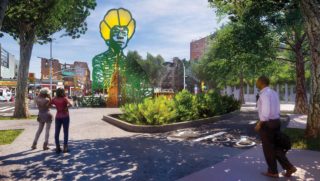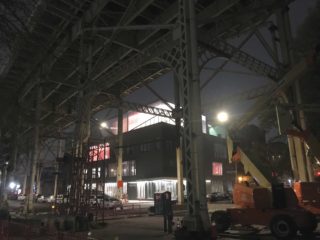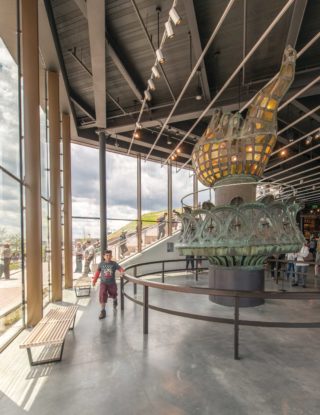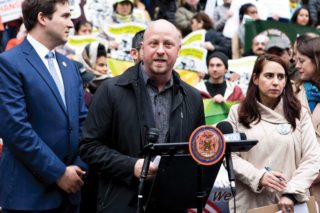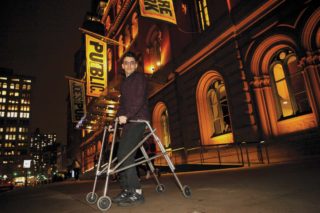“What was your room number?” he asks, looking me sharply in the eye. The expression on his face seems to say that the entire beach is his personal property. “I don’t have a room; I’m not staying in the hotel,” I say. For some reason my voice is trembling. I feel like I’ve been caught red-handed. “In that case, I request that you not bring your chair into this area,” he says. For a split second my mind races back and forth between the courtesy of his speech and the coarseness of his body language. No matter how much I tell myself not to mind, this fellow is making me feel like a piece of garbage. I take a quick look around. To my left, blue and white umbrellas stretch out for a few hundred meters like soldiers in ranks. To my right, the rows of umbrellas are shiny red. Beefy-armed attendants at wooden huts hand out towels and beach chairs. The man who has planted himself in front of me with his threatening manner must be one of them.
I fold up the plastic chair I bought for seven dollars on Collins Avenue right behind the beach and walk away, looking back over my shoulder now and then. His eyes are still following me. He must be at least 6’3” tall. His arms are thicker than my legs. Don’t even think about it, I tell the mindless tough guy within me.
Now what? I seem to have gotten too close to the red umbrellas! Another heavy-set youth comes up to me. “Are you looking for someone?” he asks, with the same rough manner as the first one. There must be someone in this city training all these guys to have the same tone of voice. You can’t tell one from the other. No, buddy, what’s it to you? I’m not looking for anyone, just trying to find a quiet corner to read my book, I want to say. Instead, I take a deep breath. The blazing sun has got me in a bad enough temper. I say nothing and back away toward the street.
I’d heard the beaches in this city were open to the public. It seems the reality is something else. If you can’t give your room number, you’re out of luck. You can go to hell. You can either walk up and down the street, or get into the sea and stay there. I throw my chair into the first garbage bin I see. I got to sit in it only for a few moments. Oh well. So today was that kind of day.
Suddenly, I catch the scent of the ouzo I sipped on the simple beach of the beautiful Greek island of Leros. An involuntary smile spreads over my face. The tamarisk trees sway gently in the sweet light breeze. And how generously they share their shade year after year with those who use the beach—people of every class and color. First come the elderly people early in the morning. They swim long and chat together before the sun reaches its blazing peak. Then families appear, one by one. The elderly are replaced by children who never tire of the great joy they take in running into the sea, shouting. A little later large groups sit down to lunch of stuffed vegetables and tzatziki made of pure white yogurt. No one comes up to ask who you are, where you come from, where you are staying. No one cares what brand your shirt is. The melody of Greek singer Antonis Remos’s “Kardi Mou” drifts across the beach. The inhabitants of Leros share the blessings God has bestowed on that beautiful little corner of the world with great generosity of heart.
I have come to travel a lot more in recent years. Last year Emre Arolat Architecture added a New York office to its busy Istanbul and London offices. What with these three important centers, plus projects ongoing around the world, academic work and conferences, a very active life is inevitable. In fact, I write this piece on the plane between New York and Miami. Beneath me, the evening blue of the Atlantic Ocean is finally turning sunset red—in my mind, the varied social climates of the tens of cities I have visited in recent months. So much travel could be tiring for some. But the truth is, I feel fortunate to have a chance to study these urban environments. Cities are mirrors of many things: varied contexts, varied cultures, and world views not at all alike. And sometimes there are parallels so surprising you would never have thought them possible.
It is a very appealing and informative mental exercise to read in the physical structures of cities the social congruities of different geographies, their varied sociocultural layers, and of course their dominant political dimensions. Miami Beach is both a favorite locale of a jet-set society and a terrible example of a quality public space. A few years ago, while a visiting professor at the Yale School of Architecture, I considered the city with my students in the Advanced Design Studio. I recommended they rethink Miami Beach in the context of its architectural spaces and develop various proposals, going beyond the icon-making factors that have dominated the urban fabric in recent years. Could a quality planning strategy overcome this difficult problem we might call urban segregation— and the phenomenon of social disintegration it brings with it?
However impossible it may seem to keep up our work without getting caught in the wheels of the system, what kind of trump cards remain in the hands of an architect carrying out projects in this neoliberal environment we find ourselves in? What can we do for the public good? Can an architect occupy a position other than being an agent of the image industry, hopelessly carrying water for the mills of power? Can the power of design bring social classes together to ensure the diversity we seek?
We are living through a period when leaders all over the world are trying to increase their power at any cost. And, through the centuries, the city has been a kind of instrument such people have easily manipulated to display that power. At first glance it might not seem to make much sense to weigh Miami Beach and the Blefoutis Beach of Leros on the same scale. But we should not forget that cities become more attractive the more permeable they are, and a democratic urban politics is possible only to the degree that social diversity is inclusive and undiluted.









